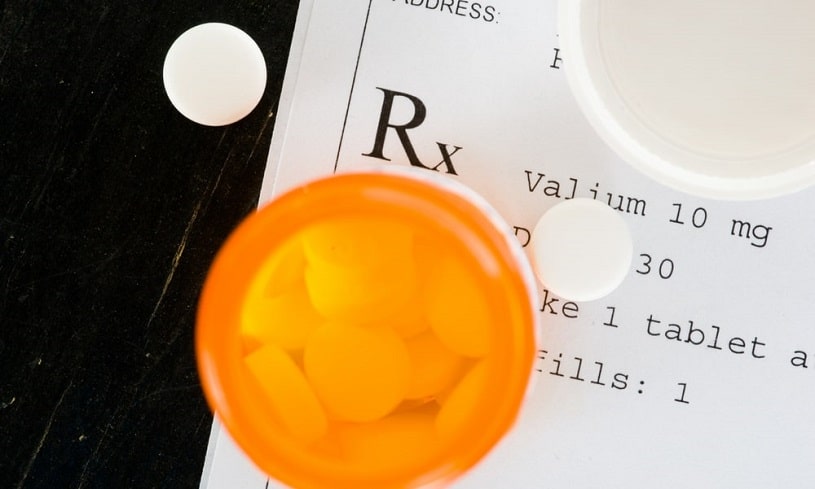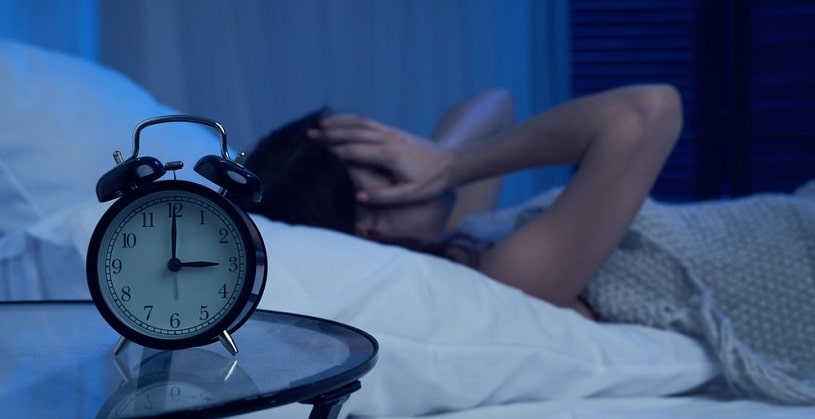
Valium is the most popular brand of the drug known as diazepam. It belongs to a group of drugs called benzodiazepines. Although it is a drug with the risk of addiction and withdrawal, there are many Valium uses. It is most commonly known to help treat anxiety disorders. This article will discuss the different medical uses of this drug in detail and the contraindications to its use.
Table Of Contents:
Reasons for Diazepam Prescription
Valium, known generically as diazepam, is a benzodiazepine. It can be used to treat various health conditions, including medical conditions such as anxiety and sleep disorders.
The drug is not meant to be used consistently or long-term, nor is it intended to treat typical anxiety that everyone experiences due to daily stresses.
Specifically, it is intended to be used for anxiety disorders.
Doctors also utilize diazepam in the treatment of muscle spasms, including those related to cerebral palsy and paralysis. It has been found to have a positive effect on seizure disorders as well, but when taken with other drugs. In clinical settings, it can be used for sedation in advance of medical procedures.
Finally, it may also be used in alcohol rehabilitation clinics to manage withdrawal symptoms when quitting alcohol abuse. While it does not treat the addiction itself, it does manage the health effects such as acute agitation, tremors, delirium, and hallucinations caused by alcohol withdrawal.

A prescription will detail how often the medication should be taken, Valium dosage, and whether a refill is allowed. The drug comes in 2 mg, 5 mg, and 10 mg tablets.
To get a prescription, a patient must visit a doctor specializing in the medical issue they wish to treat. If someone needs diazepam to treat anxiety, they see a psychiatrist. If they are interested in diazepam for the treatment of cerebral palsy, they see a neurologist.
When seeking a prescription for short-term use — say, to manage anxiety effects while flying on an upcoming trip — getting the prescription tends to be fairly simple. If seeking a diazepam prescription for more than just a few pills, obtaining a prescription is harder, often requiring multiple therapy sessions or tests so the doctor can determine if it is the correct course of treatment with positive effects.
Approved Valium Uses
Valium has a wide array of health conditions that it is used for. However, only some of these are approved by the Food and Drug Administration. Other uses are considered to be off-label uses.
FDA-Approved Diazepam Uses Include:
- Anxiety disorders
- Acute alcohol withdrawal
- Muscle spasms
- Symptomatic treatment of spasticity in upper motor neuron disorders
- Epilepsy and other seizure disorders, when in combination with other medications
There are some other diazepam uses that are not approved by the FDA.
These Off-Label Valium Uses Include:
- For sedation in intensive care units
- Sleep disorders such as insomnia
- Acute treatment of spasticity in pediatric cerebral palsy
- Tension headaches
- Tremors
Valium for Sleep
This, and other benzodiazepines, are popularly used to treat insomnia and induce sleep, which is very likely the best known among Valium uses. Many people use Valium for sleep without a prescription. Surprisingly, the use of Diazepam for sleep disorders like insomnia is not an FDA-approved use of the drug.

It is useful for inducing sleep because, as one of the benzodiazepines, it increases the effects of a neurotransmitter known as GABA or gamma-aminobutyric acid. This neurotransmitter has a major involvement in the CNS for the induction of sleep.
Valium for Pain
Valium for pain relief is particularly used in cases of back pain (due to its effects in reducing spasms) and migraines, which is an off-label use of it.
One study done found that diazepam had an effect in increasing the tolerance of study participants to pain. In the use of Valium for pain caused by muscle spasms, such as back pain, an animal study was able to determine that its muscle relaxing action was likely due to the effect it has on pathways in the spinal cord. It causes relaxation of the muscles, which then causes relief. Whether there is a direct analgesic effect of Valium for pain management is not certain.
Valium for Anxiety
The use of Valium for anxiety is one of the major indications. Of all the indications approved by the FDA, anxiety disorders are the most popular. Valium for anxiety can provide anxiolytic effects due to binding to receptors in the limbic system, just like other benzodiazepines.
Diazepam for Vertigo
The treatment and use of Valium for vertigo is not one of the most popular ones. This is because there is not enough clinical evidence to support its effectiveness against the condition. However, it is used occasionally to manage symptoms of the condition and has been shown to be effective through clinical studies.
Animal studies have elucidated the mechanism behind the usefulness of Valium for vertigo. It seems to be effective in inhibiting the basal level of activity in the vestibular system responsible for the balance.
Diazepam for Depression
Using this drug to treat depression is an off-label use, though there seems to be documented efficacy. A study from 1989 found that drugs like diazepam were very effective in improving symptoms of depression in patients over a period of eight weeks.

Its action in this regard is linked to the GABA theory of depression. This theory postulates that the effects of a deficit in GABA are responsible for causing depressive disorders. The fact that drugs like benzodiazepines help increase the GABA effect adds more basis to this theory.
Contraindications
Part of what makes using diazepam without a doctor’s supervision a risk is that there are many contraindications for the medication and interactions with other drugs. When used without a prescription, the user is unlikely to realize they are contraindicated for use or that other medicines they include can interact dangerously with diazepam.
Due to the Risk of Injury or Death, Diazepam Should Not Be Used in Conditions That Include the Following:
- Myasthenia gravis
- Severe respiratory insufficiency
- Severe hepatic insufficiency
- Sleep apnea syndrome
- Narrow-angle glaucoma
Even when using the drug when prescribed, the risks are present, but under doctor supervision, they are significantly reduced. As such, one should not consume diazepam without a prescription. There is a chance of unknowingly using it with one of the drugs with dangerous interactions. Moreover, Valium has a long half-life and stays in one’s system for a long period. It means that it may not be safe to consume other medications even the next day, as there can still be some diazepam present in the system.
Using Diazepam Safely
Diazepam can be used in the treatment and relief of symptoms of a vast number of health conditions. The use of Valium for sleep and anxiety disorders is relatively common.
Though the Food and Drug Administration has not approved Valium uses in off-label cases, there has been proven efficacy based on clinical studies.
As effective as it can be in the treatment of its indications, it also has numerous contraindications. There are many interactions it can have with other medications or drugs. There are also many diseases where diazepam can have serious health consequences.
If you consume it without a prescription, it is essential to let your doctor know to avoid the health risk that may be taken.
Valium addiction should not be overlooked as well. With all its efficacy, there is still a risk of developing tolerance and dependence. In this case, it is essential to seek addiction treatment before the addiction becomes severe.
Hope Without Commitment
Find the best treatment options. Call our free and confidential helpline
Most private insurances accepted
Find Drug Rehabilitation Centers Near You Anywhere In the US
Addiction Resource team has compiled an extensive list of the top drug rehabilitation facilities around the country. Use our locator tool to find the best centers near you.
Page Sources
- Dhaliwal J.S., Rosani A., Saadabadi A. Diazepam. [Updated 2021 Jan 20]. In: StatPearls [Internet]. Treasure Island (FL): StatPearls Publishing; 2021 Jan-. Available from: https://www.ncbi.nlm.nih.gov/books/NBK537022/
- US Food and Drug Administration. Valium Medication Guide. https://www.accessdata.fda.gov/drugsatfda_docs/label/2016/013263s094lbl.pdf
- US Department of Health and Human Services. Diazepam - Medical Countermeasures Database. 2013. https://chemm.hhs.gov/countermeasure_diazepam.htm#off
- Gottesmann C. (2002). GABA mechanisms and sleep. Neuroscience, 111(2), 231–239. https://pubmed.ncbi.nlm.nih.gov/11983310/
- Chapman, C. R., & Feather, B. W. (1973). Effects of diazepam on human pain tolerance and pain sensitivity. Psychosomatic medicine, 35(4), 330–340. https://pubmed.ncbi.nlm.nih.gov/4719020/
- Date, S.K., Hemavathi, K.G., & Gulati, O.D. (1984). Investigation of the muscle relaxant activity of nitrazepam. Archives internationales de pharmacodynamie et de therapie, 272(1), 129–139. https://pubmed.ncbi.nlm.nih.gov/6517646/
- Griffin, C.E., 3rd, Kaye, A.M., Bueno, F.R., & Kaye, A.D. (2013). Benzodiazepine pharmacology and central nervous system-mediated effects. The Ochsner journal, 13(2), 214–223. https://www.ncbi.nlm.nih.gov/pmc/articles/PMC3684331/
- McClure, J. A., & Willett, J. M. (1980). Lorazepam and diazepam in the treatment of benign paroxysmal vertigo. The Journal of otolaryngology, 9(6), 472–477. https://pubmed.ncbi.nlm.nih.gov/6110782/
- Luscher, B., Shen, Q., & Sahir, N. (2011). The GABAergic deficit hypothesis of major depressive disorder. Molecular psychiatry, 16(4), 383–406. https://www.ncbi.nlm.nih.gov/pmc/articles/PMC3412149/
- Tiller, J. W., Schweitzer, I., Maguire, K. P., & Davis, B. (1989). Is diazepam an antidepressant?. The British journal of psychiatry : the journal of mental science, 155, 483–489. https://pubmed.ncbi.nlm.nih.gov/2692764/
- Shih, R. D., Walsh, B., Eskin, B., Allegra, J., Fiesseler, F. W., Salo, D., & Silverman, M. (2017). Diazepam and Meclizine Are Equally Effective in the Treatment of Vertigo: An Emergency Department Randomized Double-Blind Placebo-Controlled Trial. The Journal of emergency medicine, 52(1), 23–27. https://pubmed.ncbi.nlm.nih.gov/27789115/


 Reviewed by:
Reviewed by:  Written by:
Written by: 

 FindTreatment.gov
FindTreatment.gov